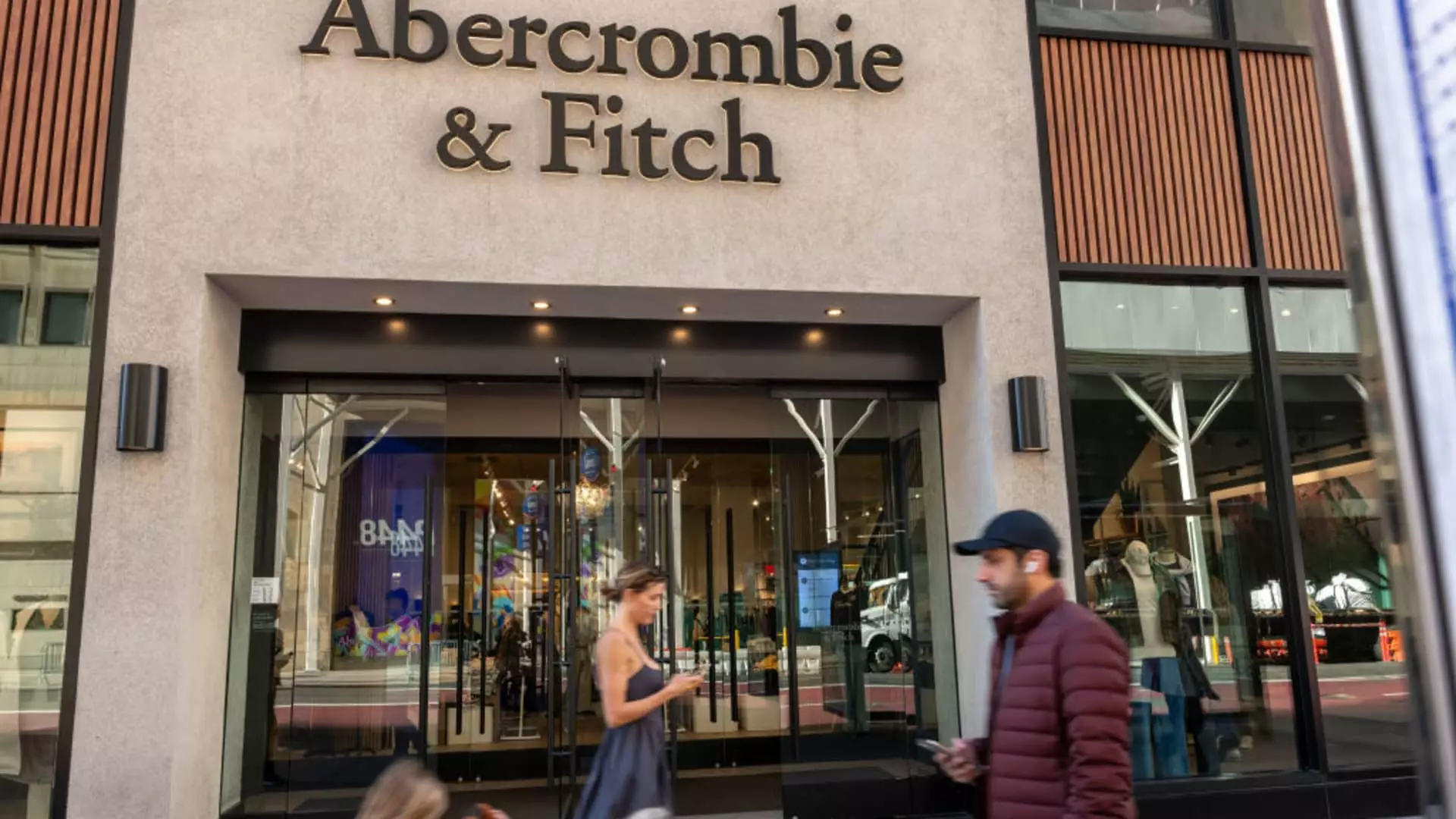Abercrombie & Fitch, once an emblem of youth culture and counterculture in the late 90s and early 2000s, has made headlines once again, this time for its robust financial performance despite facing some significant controversies. The company’s recent quarterly financial results highlight a resurgence that underscores its adaptive strategies in a rapidly changing retail environment. Notably, the recent arrest of former CEO Mike Jeffries for troubling allegations has not seemingly dented the performance of the brand. Instead, Abercrombie is poised to continue its upward momentum—a testament to effective management and market resilience.
In its latest earnings report, Abercrombie & Fitch announced earnings per share of $2.50, exceeding the Wall Street expectation of $2.39. The company reported revenues of $1.21 billion, which surpassed analyst predictions and represented a 14% year-over-year growth from $1.06 billion. This trend of increasing sales demonstrates solid demand for the brand’s offerings. The reported net income for the quarter ending on November 2 was $131.98 million, marking a significant increase compared to $96.2 million from the same period last year, thereby influencing investor sentiment positively.
Investors were encouraged to learn that Abercrombie expects a sales growth of 5% to 7% for the crucial holiday shopping season, a figure that exceeds analyst forecasts of 4.8%. For the entire fiscal year, a revised forecast anticipating sales growth between 14% and 15% reflects a more optimistic outlook than the previously estimated range of 12% to 13%. This adjustment signals Abercrombie’s confidence in driving sales, particularly as it looks to capture the lucrative holiday shopping segment.
Leading the charge in these numbers is CEO Fran Horowitz, who has reiterated the strength of Abercrombie’s brand portfolio. Notably, growth has been observed across all geographic regions, with the Americas showing a 14% boost, EMEA (Europe, the Middle East, and Africa) rising by 15%, and APAC (Asia-Pacific) surging by an impressive 32%. Furthermore, the Abercrombie and Hollister brands individually achieved comparable sales growth rates of 11% and 21%, respectively, highlighting a strategic focus on brand differentiation and target demographic engagement.
Horowitz’s approach includes expanding into new markets and product categories, such as the recent wedding collection and a partnership with the NFL tailored to tap into the sports enthusiasts’ demographic. By venturing into these diverse territories, Abercrombie is working to stay relevant amid evolving consumer preferences while building a balanced portfolio targeted at both millennials and Gen Z shoppers.
Market Sentiment: A Shift in Consumer Confidence
The retail landscape faces ongoing challenges, including economic uncertainty and shifting consumer trends. However, following the election of President-elect Donald Trump, there appears to have been a shift in market sentiment that has fostered optimism among retailers. Analysts are interpreting this newfound confidence as potentially beneficial for spending patterns during the high-stakes holiday season.
Abercrombie, along with other retailers like Dick’s Sporting Goods, has been able to channel a competitive edge by aligning itself with these changing consumer sentiments. The ability to pivot from cautious industry forecasts to a more bullish perspective illustrates a resilience that is becoming increasingly vital in today’s marketplace.
As Abercrombie & Fitch continues to navigate its path in retail, the strategic initiatives put in place by Fran Horowitz will be essential. The company stands at a crucial juncture, poised to leverage its strong market performance while addressing potential challenges tied to its past. If it can maintain its trajectory of growth and adapt to changing consumer preferences, Abercrombie could solidify its place as a key player in the apparel industry for years to come. The emphasis on brand development and an adept understanding of the consumer landscape may just pave the way for a prosperous future.

